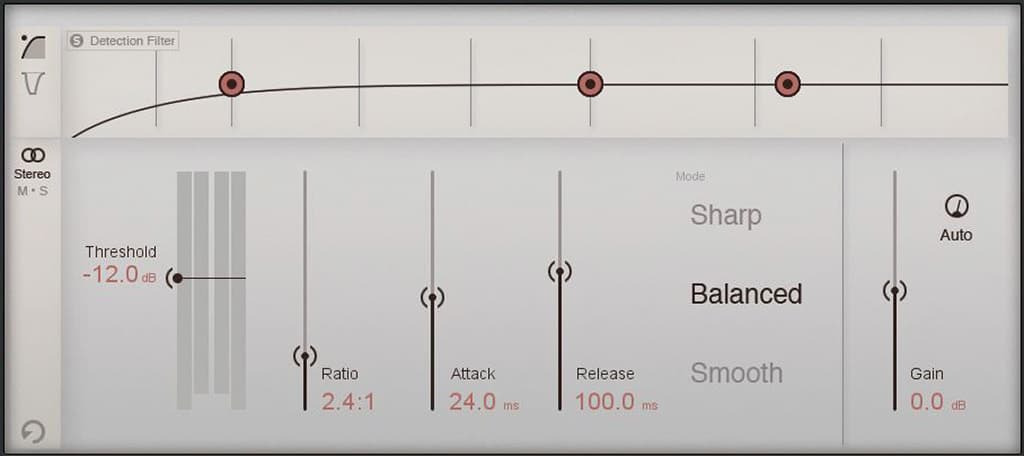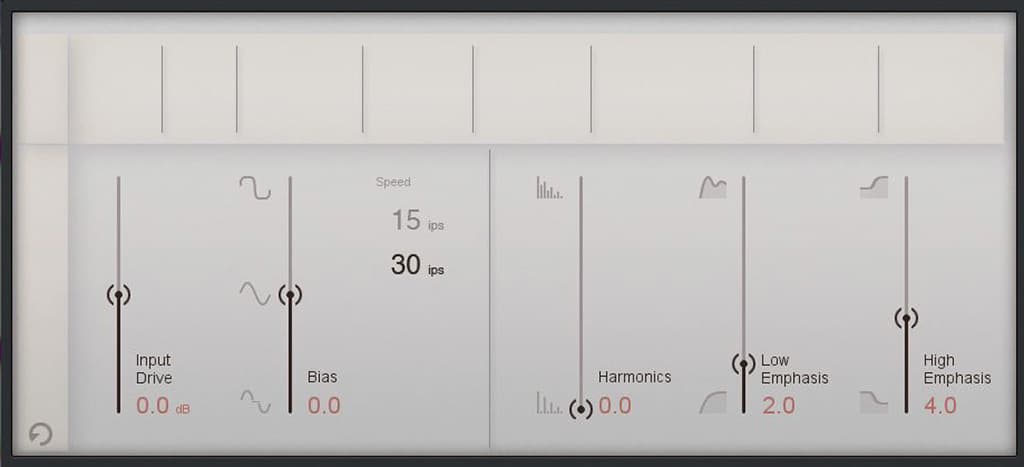
Review: iZotope Ozone 7 Advanced
Can iZotope’s all-in-one mastering software survive in this age of boutique software solutions and artisan plug-ins? Will takes a break from Game of Thrones binge-watching and journeys to the epicentre of software mastering.
Review: William Bowden
Just over a year ago I wrote a review of Ozone 6 Advanced. I found it to be a proud successor in the fairly lengthy lineage of iZotope’s ‘all in one’ mastering packages. In Game of Thrones terminology it would be called something like ‘House Ozone’s sixth heir’.
At the time of that writeup, whilst I thought it was better than the previous Ozone 5 in many respects, there were causes for concern — for example, the missing reverb algorithm. I felt as though an old friend had been beheaded.
In the intervening period of time — despite having had access to both versions of the program — have a guess how many times I have ‘gone back’ and used Ozone 5 on a job?
None. The fifth heir lies dead on the floor. It’s history.
It shows two things: Firstly, I guess I don’t use much reverb in mastering, but also, I began to appreciate many qualities of the new version — namely, the flexible workflow, the dynamic EQ, the newer IRC Type III limiting, but mainly the sound.
Since I started reviewing Ozone 7 Advanced, guess how many times I’ve used it’s previous, less advanced forebear? Well… a couple, but only for comparisons with the newer release. Seriously, it’s that good.
Ozone 6 covered a number of bases, Ozone 7 covers far more. While a large portion of the last update addressed Ozone’s visual style. iZotope has kept the same look for version seven, concentrating on packing in more new features than any prior update.
I might be getting ahead of myself, but you could say it’s straining at the bonds of being just a mastering package. It has aspirations to break out into the recording and mixing part of the chain as well, and it might possibly have the charm and skills to do it.
NEW/OLD BITS
I’m not one to automatically assume newer is better, and apparently neither is iZotope, which has gone into a veritable vintage frenzy with this release. The latest goodies include a Vintage EQ, Vintage Limiter, Vintage Tape emulation, and Vintage Compressor.
There are plenty of modern inclusions as well: a Type IV IRC maximiser algorithm, which boasts frequency specific limiting — no doubt an attempt to tackle competing products such as DMG Audio’s Limitless, a realtime audio Codec Preview, an improved Dynamic EQ, more export options than ever before, and all 10 modules can work as standalone plug-ins.
Finally, iZotope’s excellent music visualiser and metering powerhouse, Insight, is also included as in Ozone 6. We’ve covered that before, so won’t delve in now, but if bought standalone it’s worth the same as Ozone 7 Advanced. It’s a very welcome ‘freebie’.
MASTER OF ALL TRADES
With all these extra features, and wads of conspicuously vintage-y stuff, is Ozone still purely a ‘mastering package’?
The answer is a mixture of yes and no, and reflects much of the user’s own approach to sound. It appears iZotope is hoping to cover a much wider user base than ever before, and wisely so, because mixing and recording engineers — let alone bedroom musicians — outnumber mastering engineers by about a thousand to one, at least.
NEED TO KNOW
iZotope Ozone 7 Advanced
Mastering Software

From my experience though, almost everything included in the new Ozone can be used in mastering. For example, the Vintage Compressor is fantastic, I successfully gave some glue and patina to a reggae recording that was thin and anaemic, got more level than I would have thought possible, and even introduced a slightly saturated element that helped the smoothness and feel of the groove far more than a modern sounding emulation ever would.

Similarly the Vintage EQ is very useable. It’s yet another version of someone’s version of someone else’s version of a Pultec. No matter that it’s a bastard (iZotope could have dubbed it Snow for a bit more character), because it’s great! You really can get that bright presence and impossibly sturdy bass you hear on hip hop records. Used in MS mode, I found small amounts went very far. It also sounds completely different to the far more elegant, refined, and downright surgical standard EQ in Ozone.
Then there’s the Dynamic EQ — the beastly Direwolf of this tale — that can save your life with ease. The previous version had (in Ozone speak) four ‘nodes’, which are ‘bands’ in my native tongue. The new one increases this number to six. Considering most of us in mastering would not likely use that many bands at any one time it might seem like overkill. However, I think it’s great to be able to expand (or compress) your options considerably.
It’s also a good example of Ozone presenting as more than ‘just’ a mastering program. Even messing around expanding and compressing six different frequency ranges of a simple drum loop can yield a great time and awesome outcomes! Old vocal samples take on a new character when you deliberately ride the noise (or bass or formants) in different ranges along with the speech. It’s a whole new sound I hadn’t heard before and maybe a whole sub-genre waiting to poke its new-born head out.
With all these extra features, and wads of conspicuously vintage-y stuff, is Ozone still purely a ‘mastering package’?

TRACK TO TAPE
At this point it’s worth mentioning the Vintage Tape module. It’s apparently based on a Studer A810 machine, which many thought had a lot less appeal than it’s forefather, the A80, for mixing. In archiving and mastering studios it had many fans. At Festival Records where I used to work we had only the classic Ampex and MCI options, so I can’t really comment.
I find tape emulation has essentially the same odds as real tape back in the day. The chances of it working well over a whole stereo master are less than 20 per cent in my experience, and that’s being kind. It depends on the music, the dynamic range, the tape speed, the tape machine, the operating level, the headroom, whether the client is bearded or not, and what decade you’re born in. On a hard rock band where cool breakup and smashing are required it can work wonders.
However, the chances of the tape approach working well on individual tracks is extremely high. It proved to be case with this emulation. In terms of the sound, it goes deep (especially at 15ips), has quite an attractive distortion/saturation curve (though it can get nasty) and does the 30ips tightening and brightening very well indeed (while retaining good kick clarity and punch). There are also many different tones you can get out of this one unit alone; the input drive, harmonics fader, the bias, and high and low emphasis sliders mean it has plenty of variation in terms of flavours. I spent many happy hours sending my fretless bass through this unit and at times it reminded me of my hardware Culture Vulture, though without the crazy extremes.
Rounding off the Vintage section is a Vintage Limiter. It looks like a rather slimmed down version of the main Maximiser and has far fewer options. It does have a real sound of its own. It was probably my least favourite of the vintage options as it tended to be a bit pumpy in use. It can easily get you presence, but if you’ve done all your harmonic work earlier on in the chain, it’s not the best bookend.

TYPE CAST
If all this seems a bit wild, and you prefer purity, there are plenty of cleaner variations as well. If we look at the modern, mastering side of Ozone, then the new kid on the block is the Type IV limiting algorithm in the maximiser section.
It’s multi-band, can get things loud, goes deep and is quite clean in the tops. That doesn’t mean it’s always the best option for a final limiter though. Several times I went back to the Type III and was happier with the result, it was a bit rounder, warmer and more ‘old school’. Dare I say vintage, even?
I felt compelled to shoot out Ozone’s Type IV against DMG Audio’s Limitless. The results were interesting. In general I seemed to prefer Type IV. It always had a fuller warmer and frankly less ‘limited’ feel to it. However Limitless is quite a different beast. At times it felt a bit smaller, but it also does quite a good clipping simulation which worked on some material. I found the two of them worked well together in series. Maybe I’m crazy but I always preferred Ozone as the final one in the chain.
There are a lot of other features I haven’t covered. The standalone version of Ozone is practically a DAW in its own right; you can load entire playlists up at the top, fade in, fade out, etc. Because I ran Ozone inside Sequoia on my PC, I didn’t bother with any of this. Another function some people get excited about is EQ Matching, in which you try to make your work sound like someone else’s. I think it’s better and more rewarding to use your own ears but some will disagree. [For some other EQ matching uses, check out The Living End and Garbage stories in this issue – Ed].
OZONE LAYERS
I’m running out of space so probably best to begin summing up. As you can tell I think this iteration of Ozone is great. It’s so much more flexible than the previous Ozone. It arrives in a marketplace saturated (no pun intended) with options, but has enough in a single package to either accompany others well, or do a lot on its own.
What Ozone 7 Advanced really got me thinking about was the direction iZotope is heading. In order to maintain its relevance, apart from tweaking and updating what are already pretty good tools, it will likely continue to add more units into the Ozone mainframe.
Similarly to the Eurorack standard for modular synths, Ozone is a platform iZotope can keep adding new elements to that will go well beyond mastering — we could see things like MIDI sync, sequencing or gates, (another) reverb, delays, etc. Of course, you can already place third party plug-ins into the Ozone interface, but I expect the iZotope umbrella will continue to expand and offer its own.
Did I have any gripes? Funnily enough, not really. If I do want that reverb I can either go backwards down the timeline or just use something else entirely. Ozone 7 Advanced is a marvellously stable version — no freezing, no glitches and not too tough on CPU usage either.
In this ever toughening ‘value for money’ world, iZotope has given a much better account of themselves with this update. If history is anything to go by I hope to review the next version as well. I know that some may think it cynical to try and entice young people with a whole slew of ‘vintage’ extras, but in this case regardless of your age or skill level these new modules expand your options in musically useful ways. They actually work in their own right. Highly recommended. Electric Factory is still beating US pricing on iZotope products, so make sure you buy locally to save yourself some dollars.
















RESPONSES